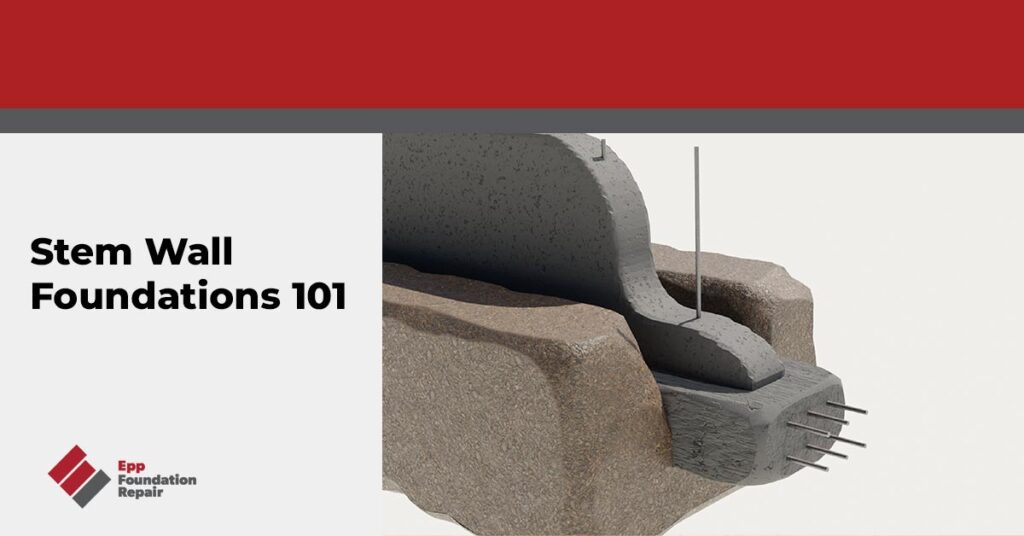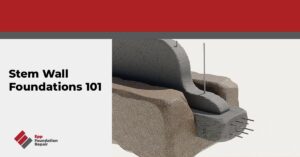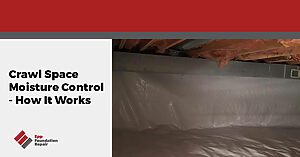If you’re wondering what a stem wall foundation is, you’ve landed on the right page. In this short article, we’re going to go over stem wall foundations, how they’re built, how to prevent problems with them, and more.
What’s A Stem Wall Foundation?
A stem wall foundation is commonly used to build residential and commercial structures. The foundation consists of a concrete stem, or wall, that sits on top of the footing and supports the weight of the building. The purpose of the stem wall is to raise the building off the ground to protect against flooding, pests, and moisture damage.
The stem wall is usually made of reinforced concrete and is poured on top of the concrete footing. The stem wall is usually reinforced with steel bars or mesh to increase its strength and durability.
Stem wall foundations are a popular choice for construction because they require less excavation and are easier to install than other types of foundations. They can also be used in various soil conditions and adapted to different building designs. Additionally, stem wall foundations have the added benefit of providing additional space for insulation and ventilation, which can help to improve energy efficiency and indoor air quality.
Is A Crawl Space Foundation The Same As A Stem Wall Foundation?
A crawl space foundation and a stem wall foundation are two different foundation systems commonly used in construction. While they both serve the purpose of providing structural support for the building, they differ in terms of design and function.
Crawl space foundation
A crawl space foundation is typically constructed with a shallow excavation that creates a space beneath the building’s main floor. This space is typically around two to three feet tall and provides access to plumbing, electrical, and other utilities beneath the building. The foundation walls are usually made of concrete blocks or poured concrete and can be reinforced with steel.
Stem wall foundation
A stem wall foundation consists of a concrete slab supported by continuous walls, or stems, that extend from the footing to the slab level. The walls can be made of concrete blocks, poured concrete, or precast concrete panels and are reinforced with steel.
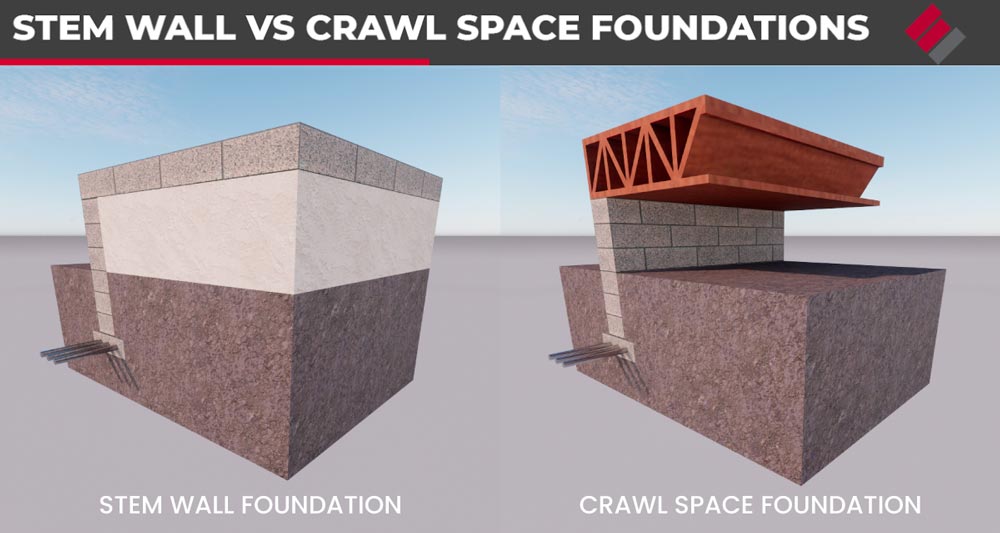
While both foundation types offer stability and durability, a crawl space foundation is often more affordable and easier to construct than a stem wall foundation. However, a stem wall foundation is often preferred in areas with high water tables or expansive soil conditions, providing better protection against moisture and movement.
Building A Stem Wall Foundation
The first step is preparing the site by removing all vegetation, debris, and organic matter to ensure a stable and even base. The soil must then be compacted with a heavy roller or a compaction machine to increase its density and prevent future settling.
Once the site is ready, the next step is to pour the concrete footing. This footing serves as the base of the stem wall and is usually 8-12 inches wide and 8-36 inches deep, depending on the size and weight of the building.
Once the footing has hardened, the concrete stem wall can be constructed on top of it. The stem wall is usually six to twelve inches thick and extends one to four feet above the ground.
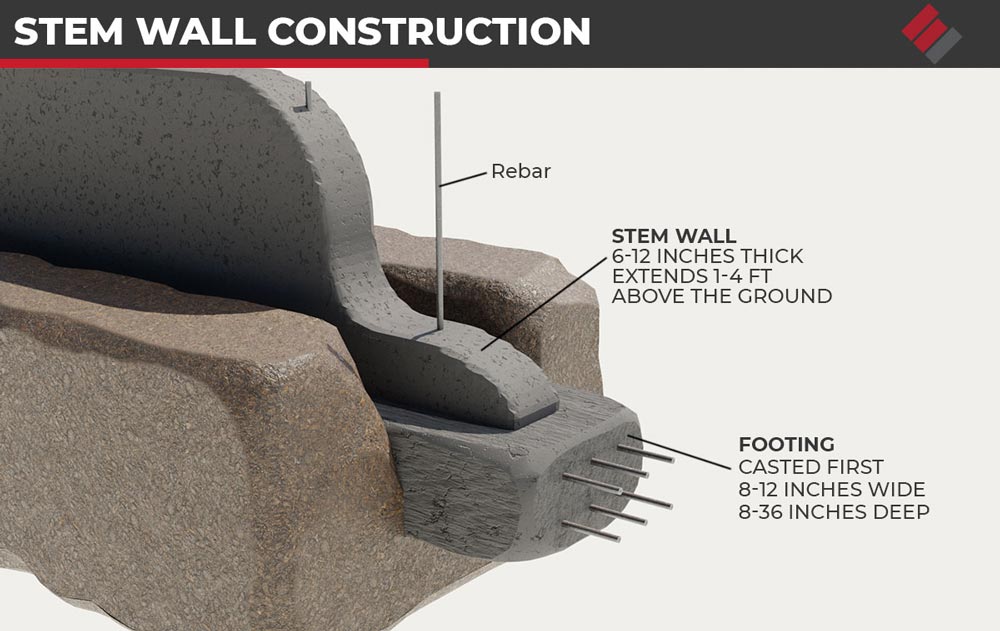
Preventing Problems With A Stem Wall Foundation
Homeowners can take several steps to prevent problems with a stem wall foundation, including:
- Regular maintenance – Regular inspection and maintenance of the foundation can help identify any issues at an early stage. Ensure there are no cracks or other visible damage to the foundation that could compromise its strength.
- Drainage – Proper drainage is a key component in preventing foundation damage. Ensure the gutters and downspouts are regularly cleaned and free of debris. Install downspout extensions to divert water away from the foundation before release.
- Re-grade your yard, if necessary – It’s also important to grade the soil around the foundation so it slopes away from the house. This prevents groundwater from draining toward the foundation.
- Landscaping – Homeowners should avoid planting trees or shrubs too close to the foundation, as their roots can penetrate and damage the foundation walls. Trees should be planted at least 15 feet away from the foundation’s perimeter.
- Avoid water accumulation – Avoid allowing water to accumulate around the foundation, as this can cause substantial damage. During rain or snowmelt, ensure that the water is diverted away from the foundation using various measures, such as trenches, drainage systems, or French drains.
- Seek professional help – If there is a significant crack or other damage to the foundation, it’s essential to seek help from a professional contractor with expertise in foundation repair. The earlier the problem is detected, the less costly it will be to fix.
For more information, see The Importance Of Proper Foundation Drainage Around Your Home.
By following these tips, homeowners can help prevent problems with their stem wall foundation and protect the structural integrity of their homes.
If you think your home might have a foundation problem, contact us today to schedule a foundation evaluation. If we find a problem, we’ll give you a repair estimate. We serve areas in four states: Nebraska, Iowa, Kansas, and Missouri.

